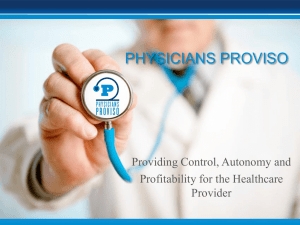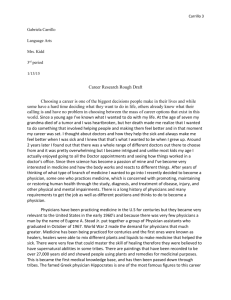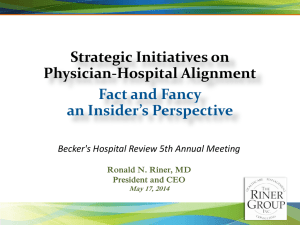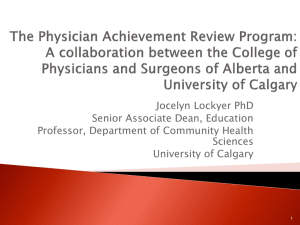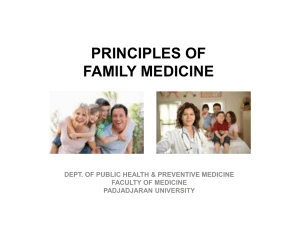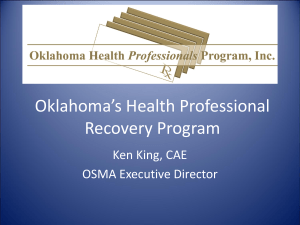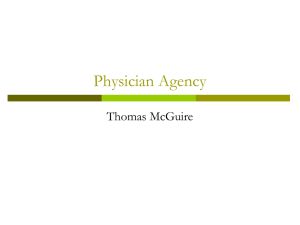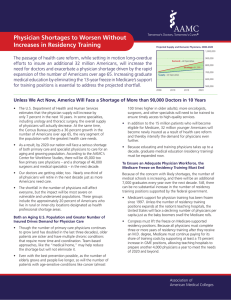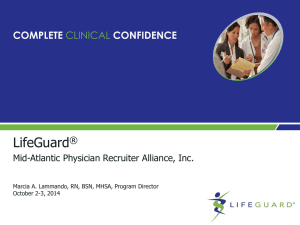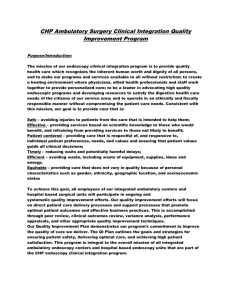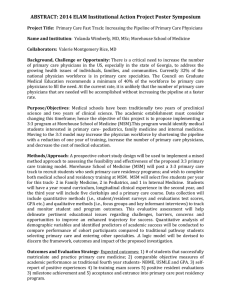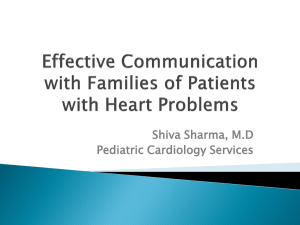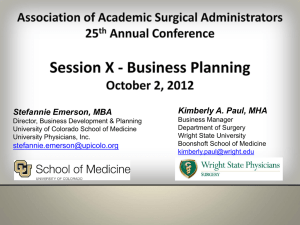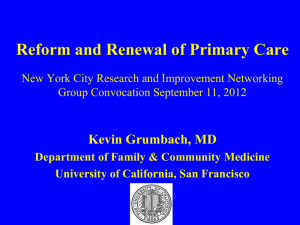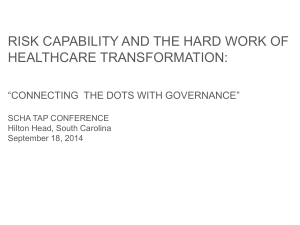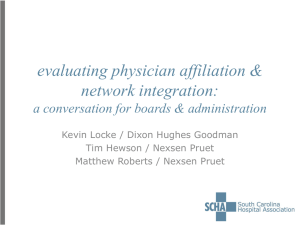Physician Shortages - Emergency Medicine Residents Association
advertisement
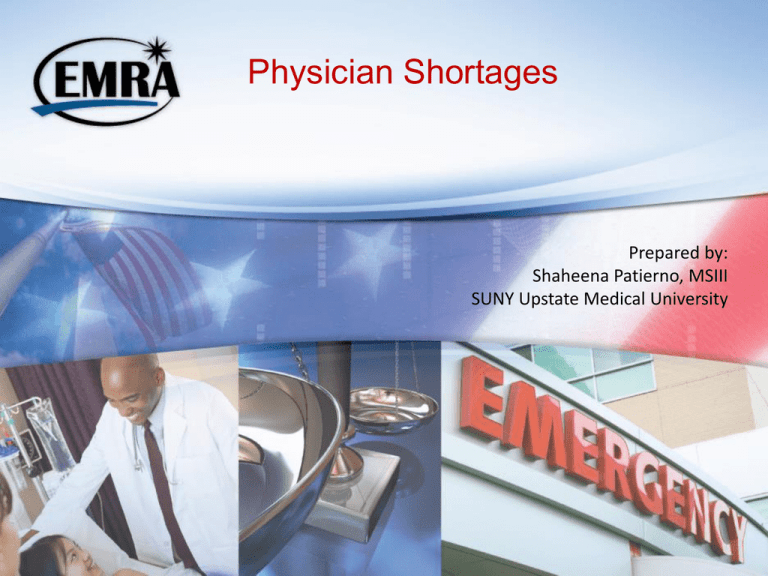
Physician Shortages Prepared by: Shaheena Patierno, MSIII SUNY Upstate Medical University Current Forecasts • By the year 2020, there will be a shortage of between 85,000 and 96,000 physicians. • Population factors will aggravate this problem over the next 12 years: – U.S. population to grow by 50 million people (18% growth) – Geriatric population to grow from 35 million to 54 million people Shortage in ER Physicians • Lack of ER Physicians • Lack of board certified and residency trained – 38% of currently practicing ER docs are neither • Workforce Study (2008) – 12 years of constant growth – No attrition – Needed to reach saturation Shortage in Primary Care Physicians • Currently, 38% of the physician workforce practice primary care medicine – Ideal percentage hypothesized to be 50% by ACGME – Patients turn to ERs when they cannot get access • Fewer U.S. medical school graduates choosing primary care Factors Causing Shortage in Primary Care Physicians • Disparity in incomes – Lower total reimbursement – Medicare’s reimbursement guidelines are not as favorable to primary care • Other factors – Burden of numerous patients – Business of the practice – On-call obligations are more onerous Uneven Distribution of Providers • Rural areas have a smaller ratio of doctors to people – Metropolitan ratio of 262 physicians per 100,000 people – Rural areas (<50,000 people) is 92.5 physicians per 100,000 – Areas with less than 10,000, is 72 physicians per 100,000 • 21% of U.S. population lives in rural areas – – – – Only 12% of ER physicians choose to practice there Uneven distribution primarily due to location of residencies Most practice where their residency program trained them Most residency programs are located in urban areas Possible Solutions • Increase the number of physicians in production annually. • Increase incentives for entering primary care. • Optimize distribution of physicians. Conclusion • Severe physician workforce shortages • Incentives needed to encourage Emergency Medicine and Primary Care • Better physicians distribution needed References • • • • • • • • • • Camargo, CA Jr. Ginde AA, Singer AH, Espinola JA, Sullivan AF, Pearson, JF, Singer AJ. Assessment of emergency physician workforce needs in the United States, 2005. Acad Emerg Med. 2008: 15(12): 1317-1320. Bodenehimer T, Berenson RA, Rudolf P. The primary care-specialty income gap: why it matters. Ann Intern Med. 2007; 146(4): 301-306. Bureau of Health Professions. Physician supply and demand: projections to 2020. U.S. Department of Health and Human Services, 2006. Council on Graduate Medical Education. Physician distribution and healthcare challenges in rural and inner-city areas. Tenth Report. U.S. Department of Health and Human Services, 1998. Council on Graduate Medical Education. Physician workforce policy guidelines for the United States, 2000-2020. Sixteenth Report. U.S. Department of Health and Human Services, 2005. Ginsburg P, Berenson RA. Revising Medicare’s physician fee schedule- Much activity, little change. New England Journal of Medicine. 356(12):1201-1203. Institute of Medicine of the National Academies. Future of emergency care series: hospital-based emergency care at the breaking point. Washington, DC: National Academy Press, 2008. Lasser KE, Woolhandler S, Himmelstein DU. Sources of U.S. physician income: the contribution of government payments to the specialist-generalist income gap. J Gen Intern Med. 2008; 23(9): 1477-1481. National Advisory Committee on Rural Health and Human Services. The 2008 Report to the Secretary: rural health and human services issues. U.S. Department of Health and Human Services, 2008. Powers, R. Emergency Department use by adult Medicaid patients after implementation of managed care. Acad Emerg Med. 2000; 7(12):1416-1420.


